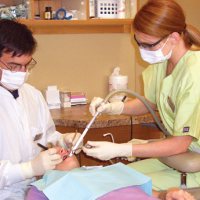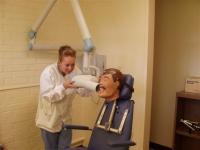Dental Assistant Salary

Studies show that the dental assistant salary median hourly earnings was $16.09 as of May 2010.1 The lowest 10 percent earned less than $22,680, and the top 10 percent earned more than $47,090.1 Benefits varied substantially by practice setting and seemed contingent upon full-time employment. According to the ADA, almost all full-time dental assistants employed by private practitioners received paid vacation time. The ADA also found that 9 out of 10 dental assistants received dental coverage.
Dental assistants held about 297,000 jobs in 2010 and overall employment is expected to grow through the year 2020. Population growth and greater retention of natural teeth by many people will increase the demand for dental services. Older dentists, less likely to employ assistants, are leaving the occupation and being replaced with recent graduates more likely to use one or two assistants. Also, as dentists' workloads increase, they are expected to hire more assistants for routine tasks in order to devote more time to complex procedures. Many of these opportunities will be for entry level positions offering on the job training.
The best way to become an assistant is to receive formal a education. Studying in an accredited program provides an education based on the latest procedures and techniques in dentistry. Some assistants do begin their careers without a college degree, however, a formal education is encouraged in order for assistants to be offered higher starting salaries and more freedom to chose their hours.
Most dental assistant programs take about a year to complete and lead to a certificate or diploma. Two-year programs, while less common, lead to an associate's degree. The Commission on Dental Accreditation (CODA) approved more than 285 dental assisting training programs in 2011.

Without further education, advancement opportunities with a dental assistant job are limited. Some dental assistants become office managers, dental-assisting instructors, or dental product sales representatives. Others go back to school to become dental hygienists. For many, this entry level occupation provides basic training and experience which serves as a step toward a more highly skilled and higher paying profession.
1Bureau of Labor Statistics, U.S. Department of Labor, Occupational Outlook Handbook, 2012-13 Edition, Dental Assistants, http://www.bls.gov/ooh/healthcare/dental-assistants.htm (8/2/12).
